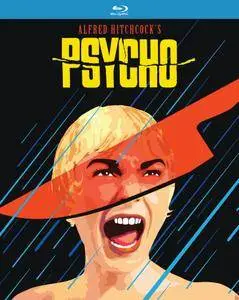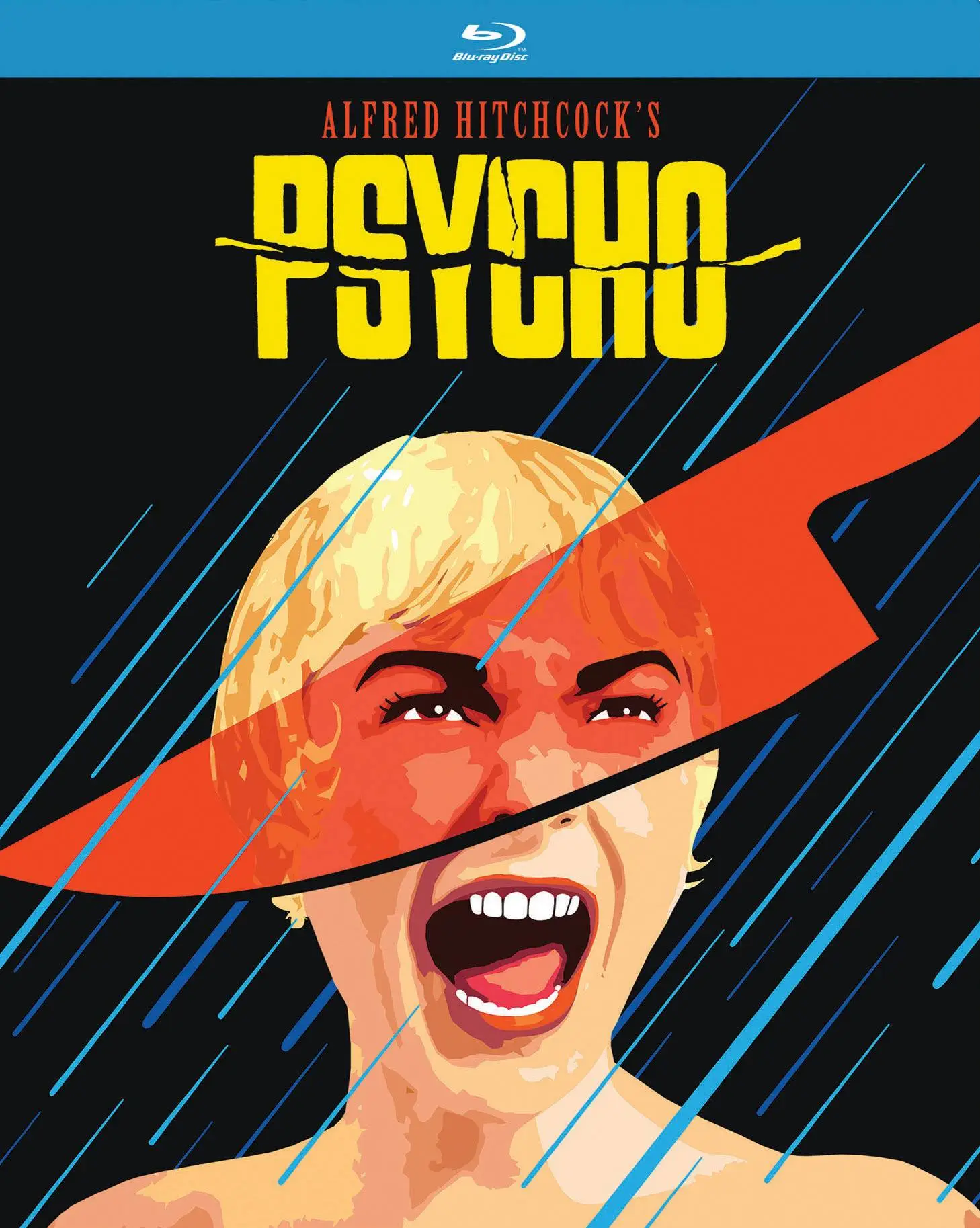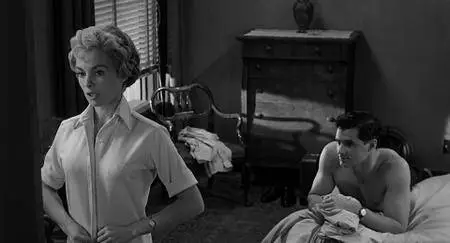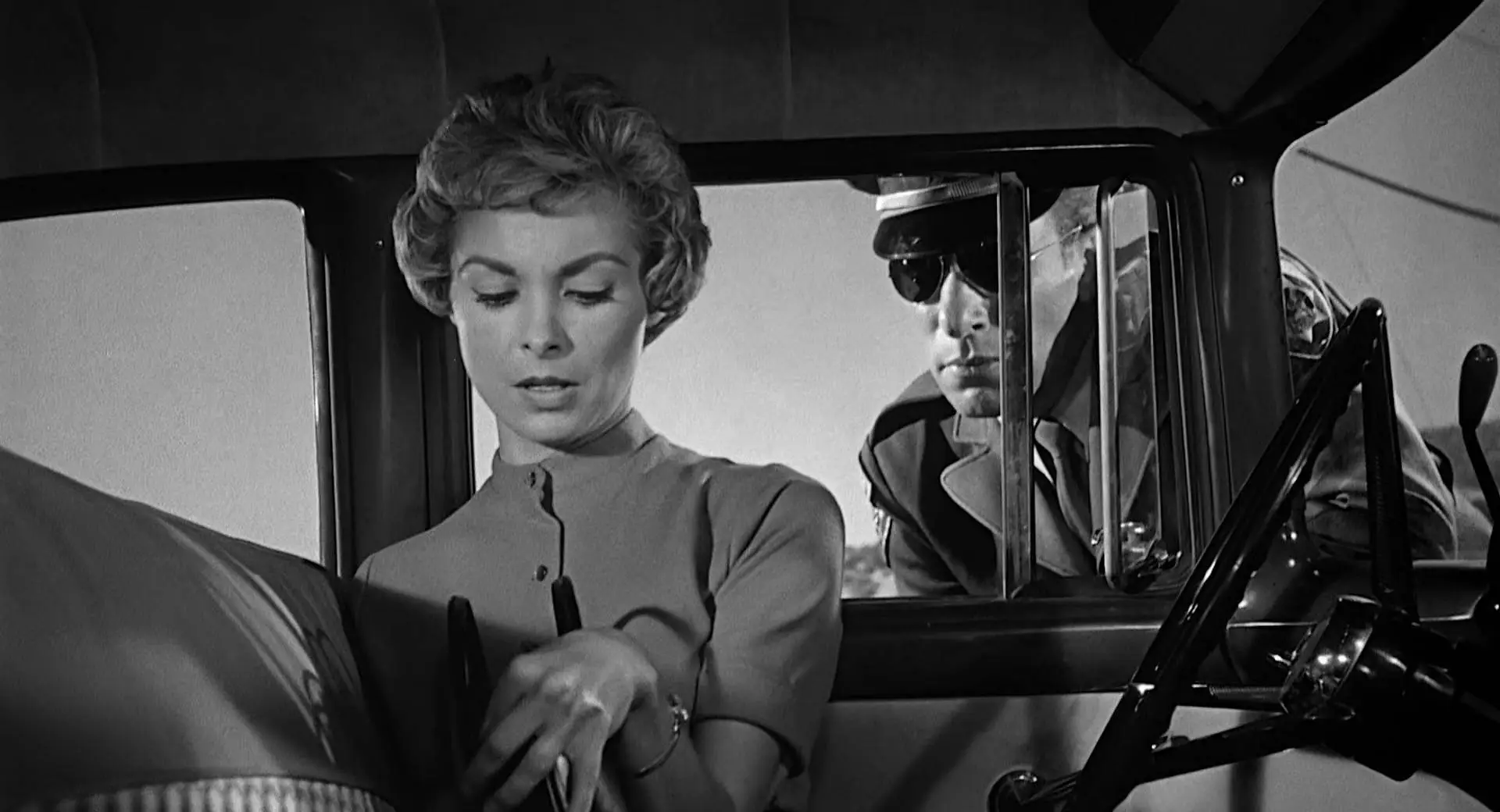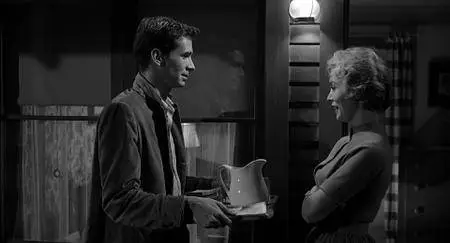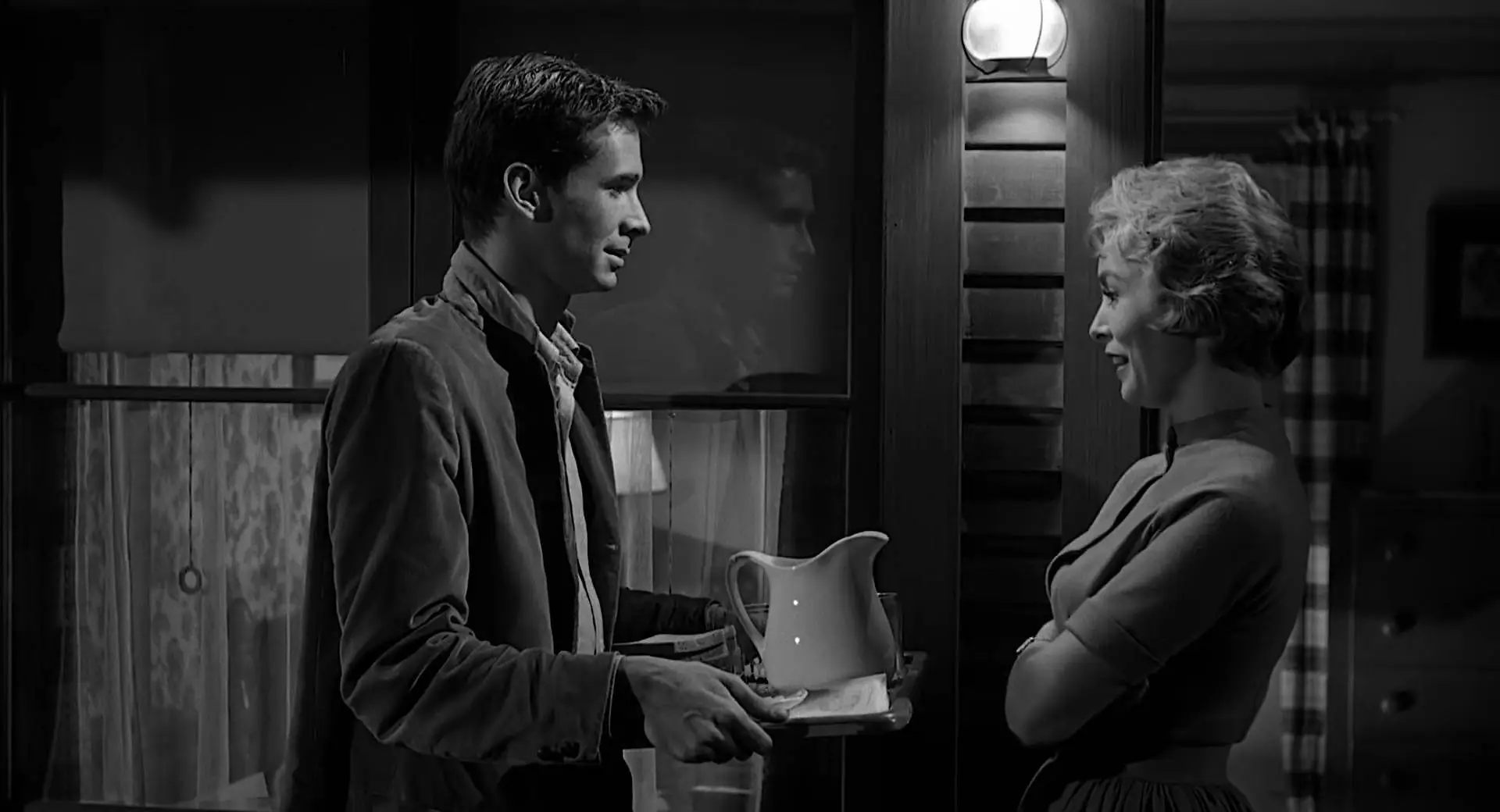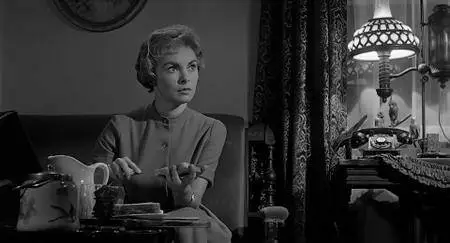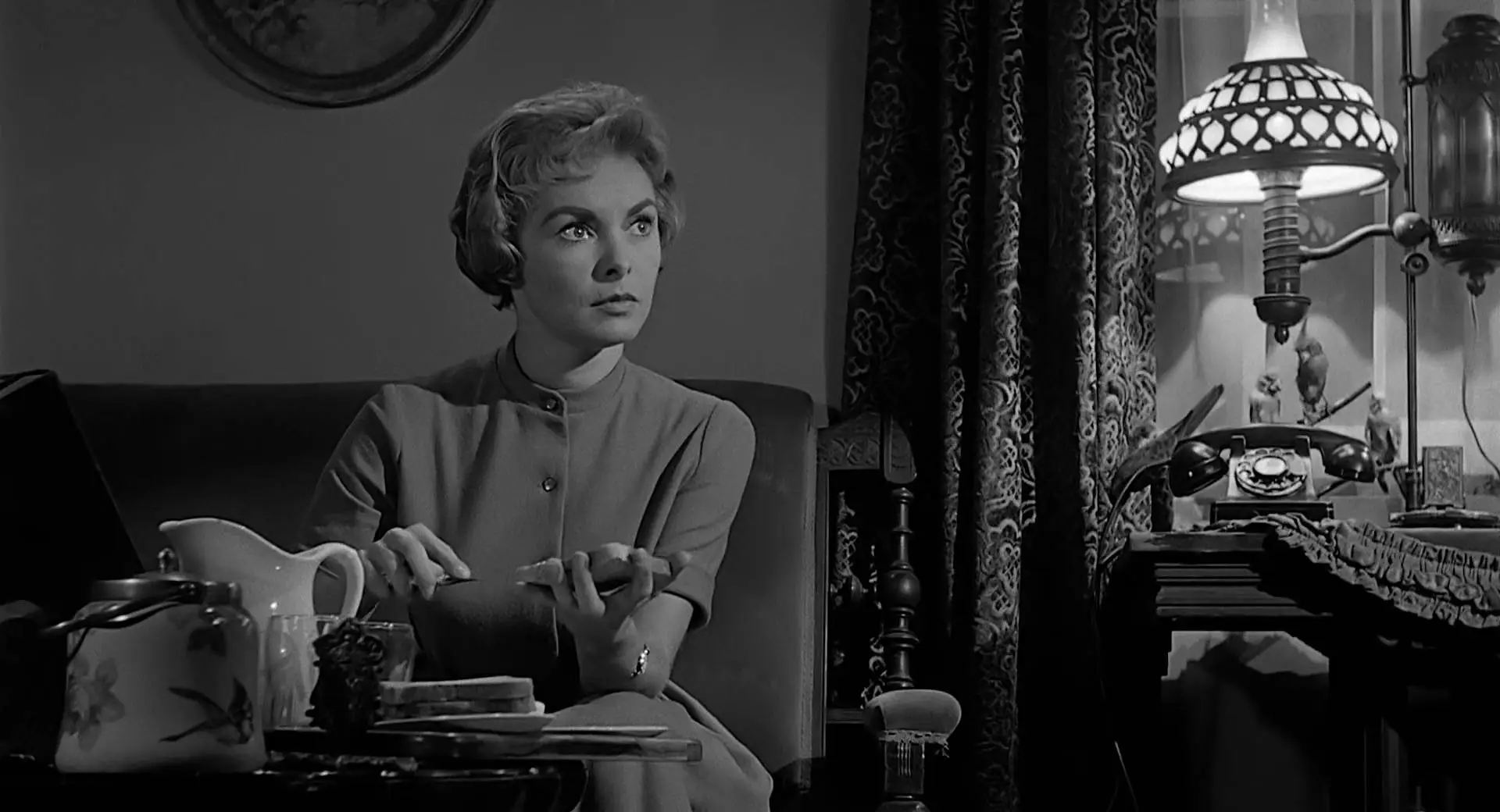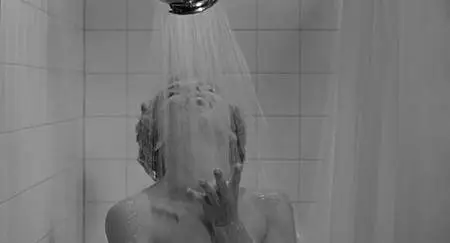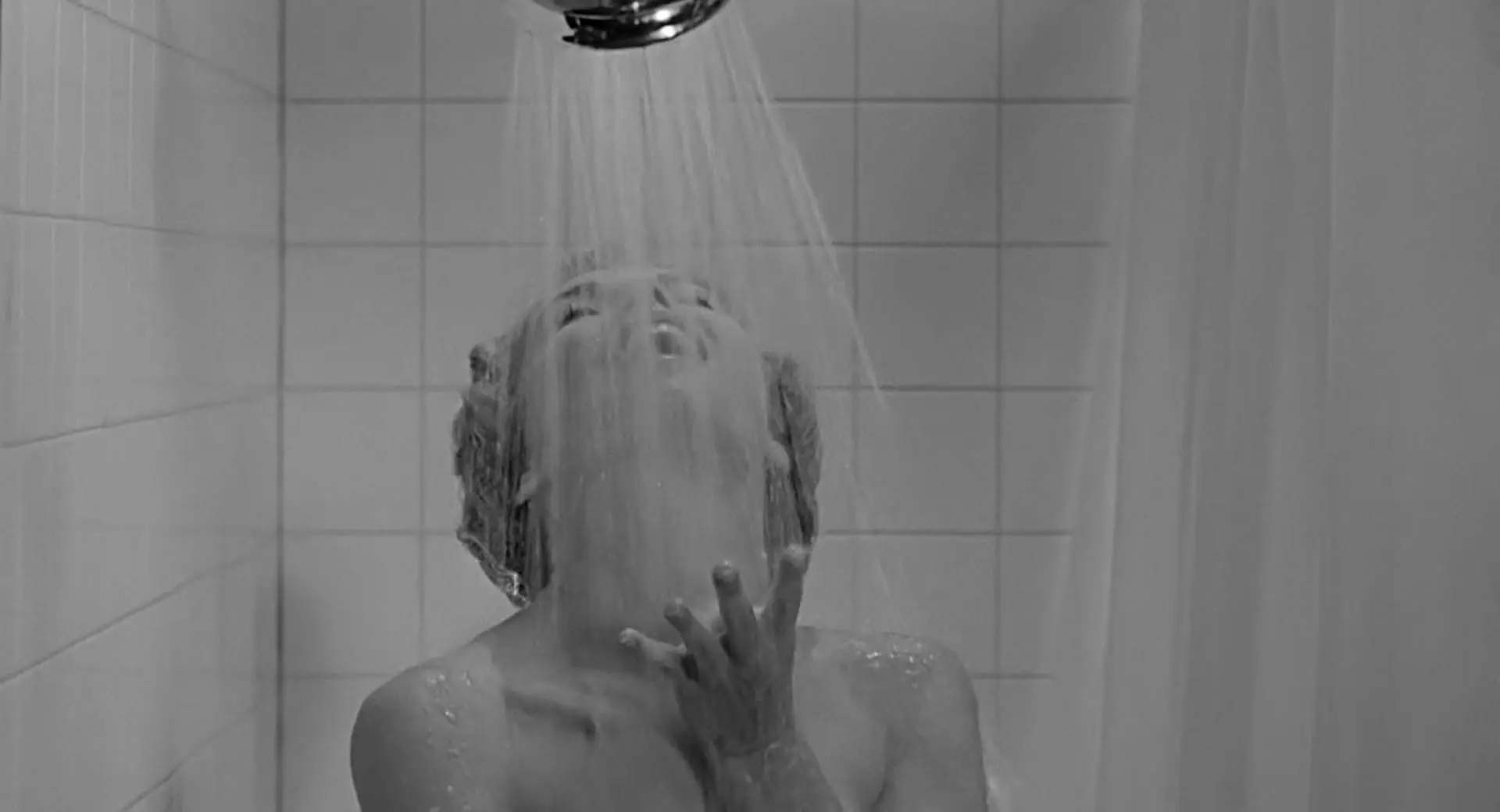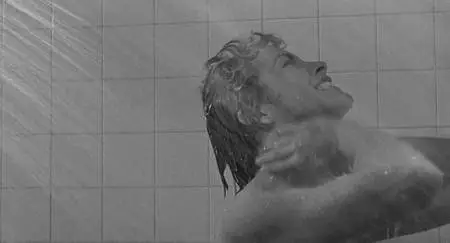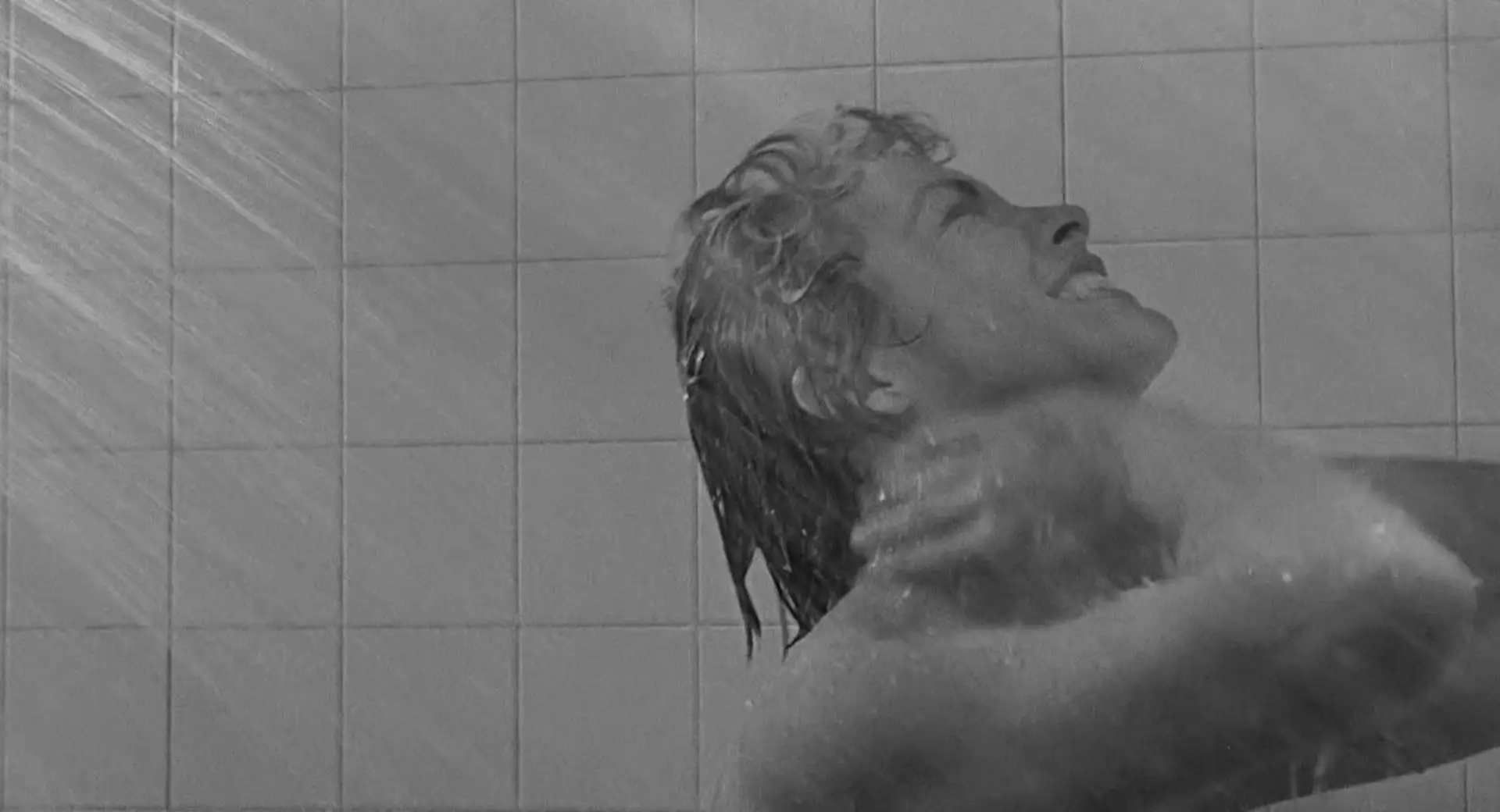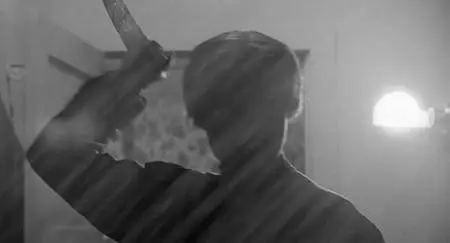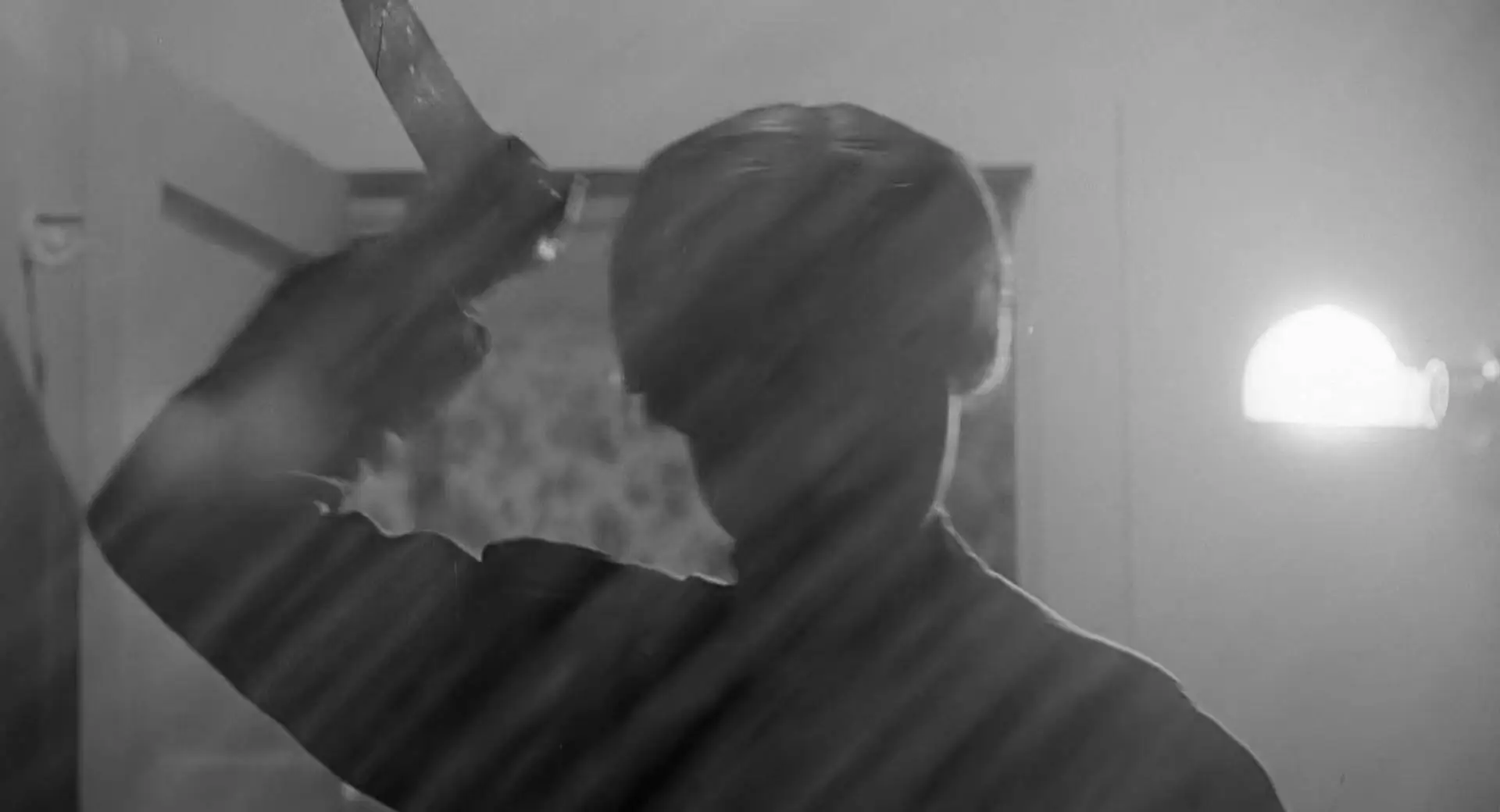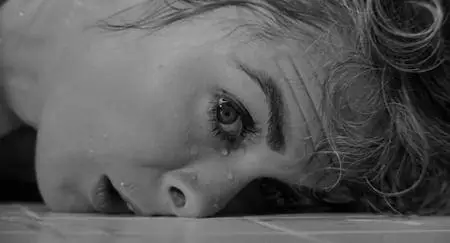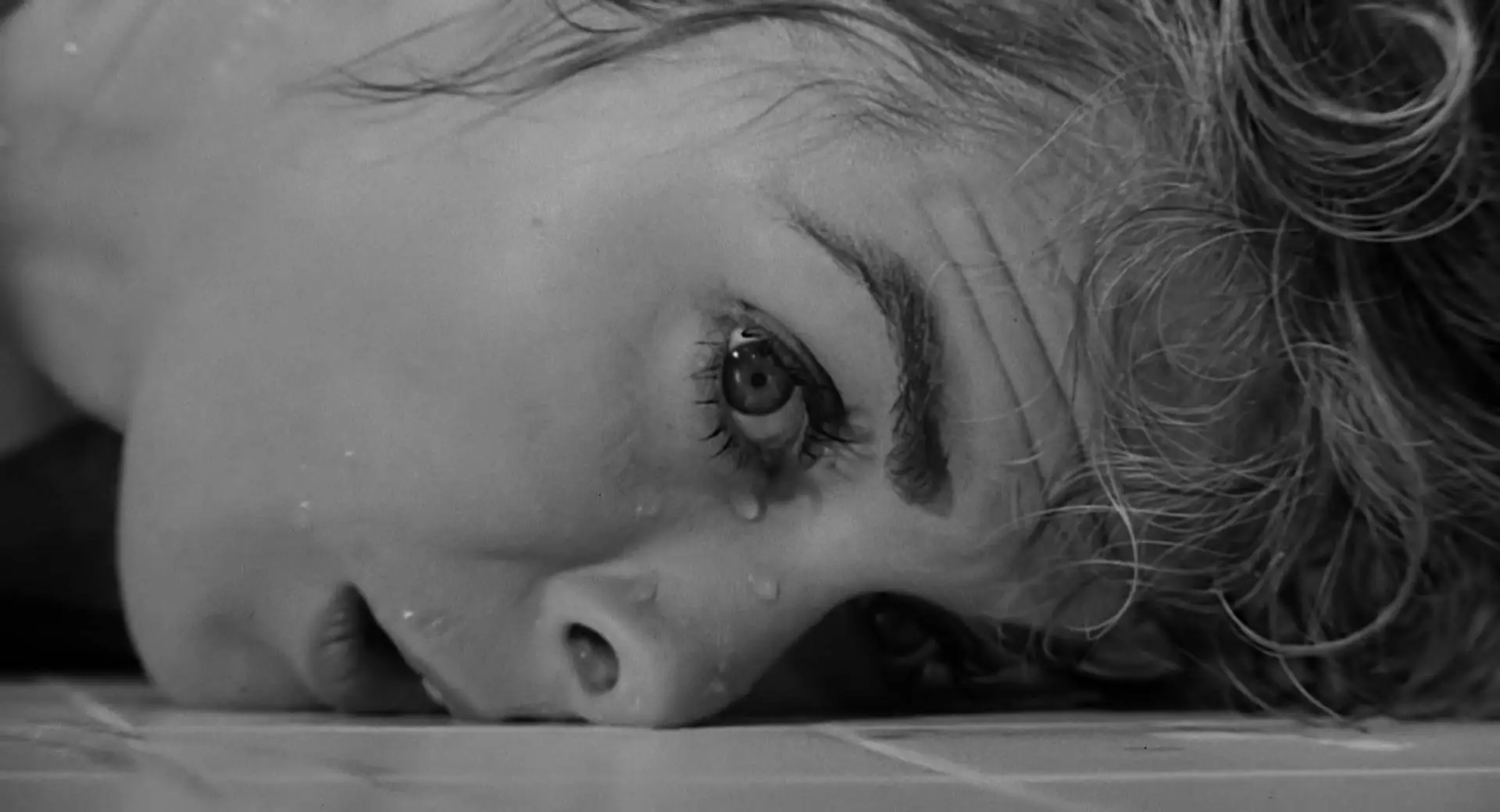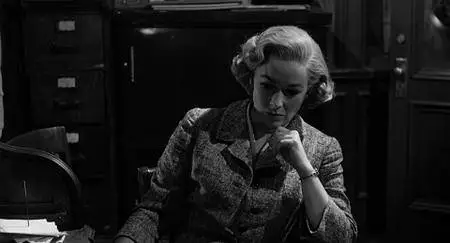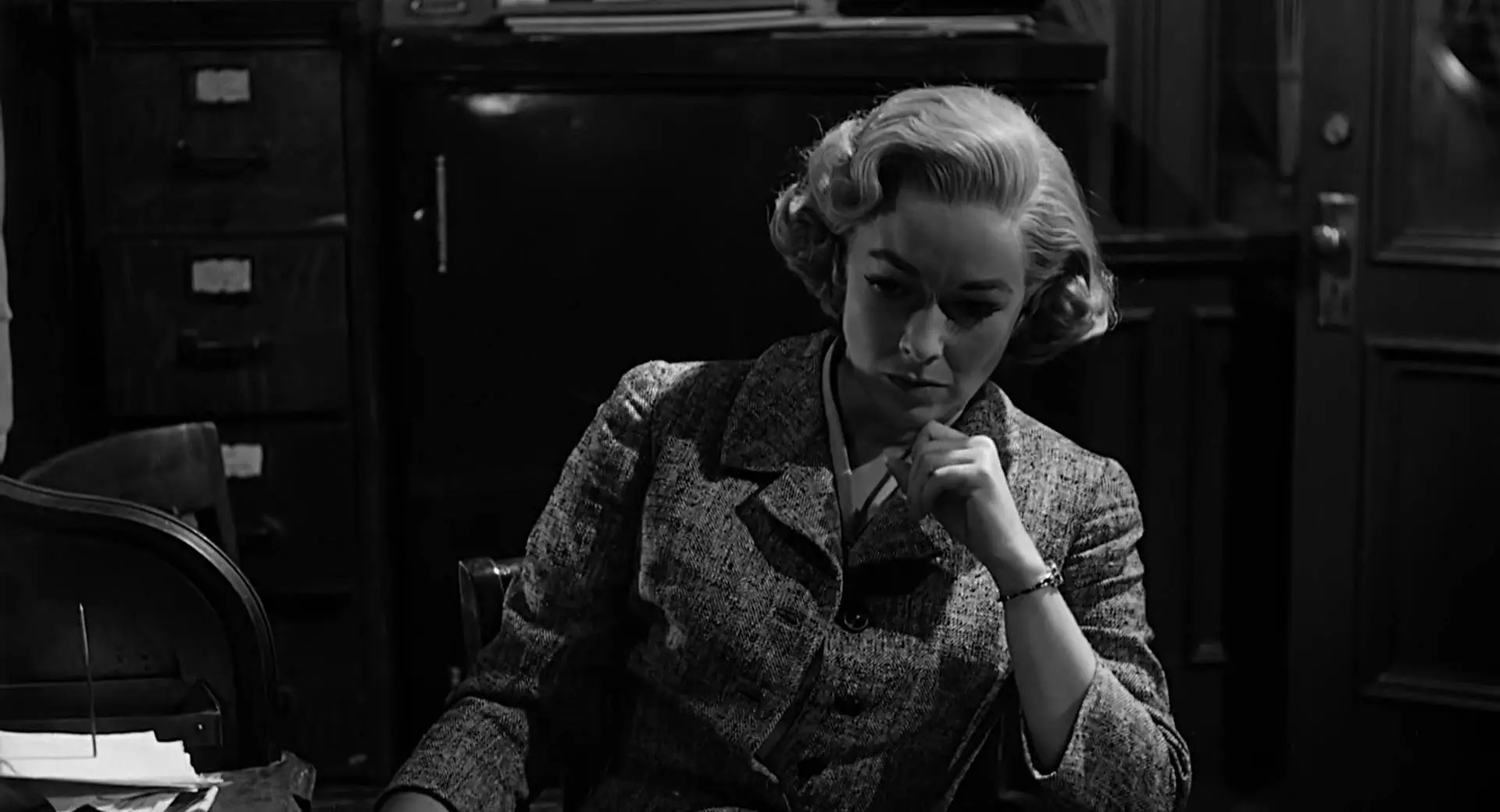Psycho (1960)
A film by Alfred Hitchcock
1080p BDRip | mkv | x265 HEVC @ 2070 Kbps, 23.976 FPS | 1920 x 1040 | 1h 48min | 2.93 GB
5.1 English DTS @ 1509 Kbps, 24-bit | 2.0 English AC-3 @ 192 Kbsp, 16-bit | Subtitle: English
Genres: Horror, Mystery, Psychological Thriller | Country: USA
#53 | My List | 100 Greatest Films of All Time | Set 1
A film by Alfred Hitchcock
1080p BDRip | mkv | x265 HEVC @ 2070 Kbps, 23.976 FPS | 1920 x 1040 | 1h 48min | 2.93 GB
5.1 English DTS @ 1509 Kbps, 24-bit | 2.0 English AC-3 @ 192 Kbsp, 16-bit | Subtitle: English
Genres: Horror, Mystery, Psychological Thriller | Country: USA
#53 | My List | 100 Greatest Films of All Time | Set 1
Director: Alfred Hitchcock
Writers: Joseph Stefano, Robert Bloch
Starring: Anthony Perkins, Vera Miles, John Gavin, Janet Leigh, Martin Balsam, John McIntire
Two iconic directors took enormous risks in 1960, entering into the tortured psyches of two very disturbed individuals. Alfred Hitchcock saw his career receive a huge shot in the arm courtesy of Psycho. Michael Powell saw his virtually end with the release of Peeping Tom. The two films are often mentioned in the same breath, as they both have an air of sexual depravity that was still rather rare in that quaintly prim and proper era which was still officially presided over by Eisenhower on this side of the pond, and Harold Macmillan "over there." So why the disparate responses? What was it about Peeping Tom that offended so many people so deeply, while they were simultaneously thrilled beyond measure by Psycho? After all, both films involve a madman who murders women; if Peeping Tom simply had more notches on its murderous belt, can that be the only reason? Especially when Psycho's anti-hero also manages to kill at least one man? There's no getting around the fact that Peeping Tom's focus, Mark Lewis, also ups the ante by filming his murders, and that, along with the tangential issues of child abuse in the Powell film, probably helped to make it the cause célèbre it became (and not in a good way). The fact that Powell makes the audience the killer, as it were, forced to look through Lewis' lens as he offs one comely lass after another may have shattered the safe and cozy fourth wall too completely for Powell's self-reflexive ideas to ever get past the shock.
But there's another, perhaps more subtle, reason that Psycho was such a sensation (in a good way) in its day, and has continued to be one of the most iconic horror films ever made. Think about this for a moment in terms of modern day horror films: the "villain" of the piece, as oddly lovable as he is, doesn't show up until 28 minutes into the film. Twenty eight minutes! And then, we don't get the first, iconic murder until a good 20 minutes after that. Can you imagine a contemporary filmmaker taking their time like that with a modern slash and dash outing? It's Psycho's almost somnambulant pace which, while first confounding critics (if not audiences, who were rapturously involved from day one), is Psycho's trump card. Never before (and far too infrequently since) had a thriller taken its time the way Psycho did, with a long a prelude, including an unusually large amount of static shots, which lulled the audience into a state of (false) security, making that epochal shower scene all the more visceral. Powell started his Peeping Tom with a murder, in fact a "first person" killing that made the audience a participant in the mayhem, willing or not, and it may have been a fatal mistake from a marketing if not an artistic standpoint. Hitchcock, ever the reserved objectivist, stood back, looked at a situation developing, and then calmly and clearly depicted his mayhem with a coldly clinical, surgical (no pun intended) detachment which made the imagery all the more gut wrenching. And since he had let the film breathe for so long before that sequence, the audience was ensconced for the ride, this time quite willingly. (It's also fascinating to contrast the way the two directors depict the eye in their film: Powell shoots the orb either straight on, or, more frequently, implies that it exists by making the camera provide point of view shots. Hitch, in a startling close-up relatively early in the film when Perkins' Bates spies on Leigh's Crane in her hotel room, shoots the eye from the side, maintaining an eerie objectivity).
Psycho is one of those films which has so entered the public consciousness that even people who haven't actually seen the film feel like they have. But newcomers to this rather odd outing in Hitch's oeuvre, especially those raised on the quick cut (pun intended) edits of modern horror films, almost always find the opening sequence, full of long, lingering shots of Marian Crane (Janet Leigh) planning a heist and driving into the California desert, either boring or bewildering. Isn't this film supposed to be about a cross dressing maniac who slices and dices women while they shower? It's a testament to Hitchcock's craft that he so carefully prepares the carnage that is to come with this spacious opening act, one which ever so slightly subverts the tamped down, "normal" life of late 1950s America. Here is Marian Crane, "dutiful" secretary, seemingly your typical everyday all American woman, stealing scads of money and then getting the hell out of Dodge before anyone notices.
But so much about Psycho is contrary both to societal expectations, and also Hitch's typical reverence for the ice cool blonde. In film after film, Hitch iconizes the unreachable, Goddess-like heights of stars like Grace Kelly or Eva Marie Saint. In Psycho, the blonde is furtive, if still cool as a cucumber, and she isn't just reached, she's penetrated in one of the most shocking sequences ever caught on celluloid. It's as if Hitchcock was finally coming to terms with his own perhaps sexually sadistic proclivities, for right or for wrong, and was "letting it all hang out," at least in this single, solitary instance. (It's interesting to note Hitchcock was back in "true form" with The Birds, his next film, with perhaps the iciest blonde in his entire filmography, Tippi Hedren). The audience, after having been coddled into its comfort zone, is left then, some 48 minutes into Psycho, without its putative star, wondering what is going on and what possibly could be coming next.
But Psycho is subversive from virtually its first frame, both within the Hitchcock oeuvre and also from an "extracurricular" perspective. Suddenly, the flowing minimalism of Bernard Herrmann's Vertigo score (a minimalism which presaged Philip Glass' by several decades) has been transformed into the stingingly bitter and fragmented strings of Psycho. After yet another superb Saul Bass title treatment, we open on a nice wide pan of Phoenix two weeks before Christmas, and then slowly move in to an interior hotel shot where we find Janet Leigh and John Gavin, very nearly in flagrante delicto. Films were certainly on the cusp of becoming more sexually frank by 1960, but it was almost always within the confines of amped up glossy emotionalism like Douglas Sirk provided. Here, caught in the lens of John L. Russell's no frills yet incredibly evocative black and white cinematography (Hitch used his television series crew for Psycho, another innovation), we're privy to a very "real" looking dalliance between an unmarried secretary and a divorced man who can't quite commit. This is most certainly not the standard ice cool unapproachable blonde of Hitchcock's canon.
As Joseph Stefano mentions in the excellent Making of documentary which accompanies the main feature on this Blu-ray, perhaps Psycho's most enduring piece of subversion, one which has been aped countless times since and was famously parodied in the Scream series, is letting the audience "connect" with whom they think is the star, and then suddenly killing that character and revealing that the film is really about someone else entirely. The fact that that slow realization dawns on the audience after the shockingly brutal shower scene, in yet another insanely languid, almost ten minute sequence, as Norman cleans up and disposes of Marion's body, is yet another sign of the genius both Stefano and Hitchcock employed in structuring the film. Also pay close attention during the sinking of the car; Hitchcock can't refrain from introducing one scary-funny moment which is perfectly redolent of his off kilter sense of humor.
Once the film moves into its cat and mouse second act, it may well indeed become a bit more formulaic than the incredibly innovative opening hour or so, but that doesn't keep Hitchcock from employing a variety of brilliant effects, and Stefano and the actors from offering some amazingly brilliant moments. From the dizzying straight down shot when Martin Balsam (as a private investigator trying to locate Marion) meets "Mother," which moves into the crazy tracking shot down the stairs, to the final reveal after Marion's sister Lila (Vera Miles) decides to explore the Bates mansion, this is simply superior, if often extremely subtle, filmmaking at every level. Hitchcock isn't above using some of his own tropes during all of this. Part of the unease the audience feels in the final showdown is due to the fact that our spunky heroine, Lila, is out on her own in very dangerous territory, much like Grace Kelly's character in Rear Window when she ventures into Raymond Burr's apartment all by her lonesome.
Hitchcock was forced to add the sort of silly coda after the denouement, where Simon Oakland as a psychiatrist becomes "Moishe the Explainer" and informs the audience of what exactly was going on all this time. It's fascinating, though, to once again see Hitchcock (and Stefano) push the filmic envelope of the era by openly discussing transvestitism, something that certainly would have made many in the audience blush over back in those days. And of course Hitchcock wraps the film up beautifully with the final monologue (voiced by Jeannette Nolan) by "Mrs. Bates." Pay very close attention to Norman's face right before the dissolve to Marion's car being hoisted from the swamp to see a little sleight of hand Hitchcock introduces just to get one final "jab" in. (And, yes, that's none other but an uncredited "Ted Baxter"—Ted Knight—as the policeman opening the holding room door).
Hitchcock had some peculiar ups and downs from Vertigo onward in his career. Vertigo is perhaps his most personal (if oddly objectified) film about obsession and image, a testament to the director's own Ego, but there has probably never been a more Id-inflected film than Psycho, one which calmly, almost surgically, delves into the depths of human depravity without blinking once. The fact that Psycho is such an oddly calm film is perhaps its most disturbing element in the long run.
Psycho is one of those films which has so entered the public consciousness that even people who haven't actually seen the film feel like they have. But newcomers to this rather odd outing in Hitch's oeuvre, especially those raised on the quick cut (pun intended) edits of modern horror films, almost always find the opening sequence, full of long, lingering shots of Marian Crane (Janet Leigh) planning a heist and driving into the California desert, either boring or bewildering. Isn't this film supposed to be about a cross dressing maniac who slices and dices women while they shower? It's a testament to Hitchcock's craft that he so carefully prepares the carnage that is to come with this spacious opening act, one which ever so slightly subverts the tamped down, "normal" life of late 1950s America. Here is Marian Crane, "dutiful" secretary, seemingly your typical everyday all American woman, stealing scads of money and then getting the hell out of Dodge before anyone notices.
But so much about Psycho is contrary both to societal expectations, and also Hitch's typical reverence for the ice cool blonde. In film after film, Hitch iconizes the unreachable, Goddess-like heights of stars like Grace Kelly or Eva Marie Saint. In Psycho, the blonde is furtive, if still cool as a cucumber, and she isn't just reached, she's penetrated in one of the most shocking sequences ever caught on celluloid. It's as if Hitchcock was finally coming to terms with his own perhaps sexually sadistic proclivities, for right or for wrong, and was "letting it all hang out," at least in this single, solitary instance. (It's interesting to note Hitchcock was back in "true form" with The Birds, his next film, with perhaps the iciest blonde in his entire filmography, Tippi Hedren). The audience, after having been coddled into its comfort zone, is left then, some 48 minutes into Psycho, without its putative star, wondering what is going on and what possibly could be coming next.
But Psycho is subversive from virtually its first frame, both within the Hitchcock oeuvre and also from an "extracurricular" perspective. Suddenly, the flowing minimalism of Bernard Herrmann's Vertigo score (a minimalism which presaged Philip Glass' by several decades) has been transformed into the stingingly bitter and fragmented strings of Psycho. After yet another superb Saul Bass title treatment, we open on a nice wide pan of Phoenix two weeks before Christmas, and then slowly move in to an interior hotel shot where we find Janet Leigh and John Gavin, very nearly in flagrante delicto. Films were certainly on the cusp of becoming more sexually frank by 1960, but it was almost always within the confines of amped up glossy emotionalism like Douglas Sirk provided. Here, caught in the lens of John L. Russell's no frills yet incredibly evocative black and white cinematography (Hitch used his television series crew for Psycho, another innovation), we're privy to a very "real" looking dalliance between an unmarried secretary and a divorced man who can't quite commit. This is most certainly not the standard ice cool unapproachable blonde of Hitchcock's canon.
As Joseph Stefano mentions in the excellent Making of documentary which accompanies the main feature on this Blu-ray, perhaps Psycho's most enduring piece of subversion, one which has been aped countless times since and was famously parodied in the Scream series, is letting the audience "connect" with whom they think is the star, and then suddenly killing that character and revealing that the film is really about someone else entirely. The fact that that slow realization dawns on the audience after the shockingly brutal shower scene, in yet another insanely languid, almost ten minute sequence, as Norman cleans up and disposes of Marion's body, is yet another sign of the genius both Stefano and Hitchcock employed in structuring the film. Also pay close attention during the sinking of the car; Hitchcock can't refrain from introducing one scary-funny moment which is perfectly redolent of his off kilter sense of humor.
Once the film moves into its cat and mouse second act, it may well indeed become a bit more formulaic than the incredibly innovative opening hour or so, but that doesn't keep Hitchcock from employing a variety of brilliant effects, and Stefano and the actors from offering some amazingly brilliant moments. From the dizzying straight down shot when Martin Balsam (as a private investigator trying to locate Marion) meets "Mother," which moves into the crazy tracking shot down the stairs, to the final reveal after Marion's sister Lila (Vera Miles) decides to explore the Bates mansion, this is simply superior, if often extremely subtle, filmmaking at every level. Hitchcock isn't above using some of his own tropes during all of this. Part of the unease the audience feels in the final showdown is due to the fact that our spunky heroine, Lila, is out on her own in very dangerous territory, much like Grace Kelly's character in Rear Window when she ventures into Raymond Burr's apartment all by her lonesome.
Hitchcock was forced to add the sort of silly coda after the denouement, where Simon Oakland as a psychiatrist becomes "Moishe the Explainer" and informs the audience of what exactly was going on all this time. It's fascinating, though, to once again see Hitchcock (and Stefano) push the filmic envelope of the era by openly discussing transvestitism, something that certainly would have made many in the audience blush over back in those days. And of course Hitchcock wraps the film up beautifully with the final monologue (voiced by Jeannette Nolan) by "Mrs. Bates." Pay very close attention to Norman's face right before the dissolve to Marion's car being hoisted from the swamp to see a little sleight of hand Hitchcock introduces just to get one final "jab" in. (And, yes, that's none other but an uncredited "Ted Baxter"—Ted Knight—as the policeman opening the holding room door).
Hitchcock had some peculiar ups and downs from Vertigo onward in his career. Vertigo is perhaps his most personal (if oddly objectified) film about obsession and image, a testament to the director's own Ego, but there has probably never been a more Id-inflected film than Psycho, one which calmly, almost surgically, delves into the depths of human depravity without blinking once. The fact that Psycho is such an oddly calm film is perhaps its most disturbing element in the long run.
Please Note: Playback of this H.265/HEVC encoded video file in VLC media player may cause problem (like Green Screen). A fresh install of the player or a new version can solve this problem. I strongly suggest you to download and install "K-Lite Codec Pack (Full or Mega version; totally free with WMP Classic)" on your system first and then try to play the file in VLC. Or, you can just install PotPlayer, and no codecs will be needed. I use this player for playing all sorts of media… from MP3 audio files to 4K UHD video files.
Mac users please get help from the Internet and YouTube.


